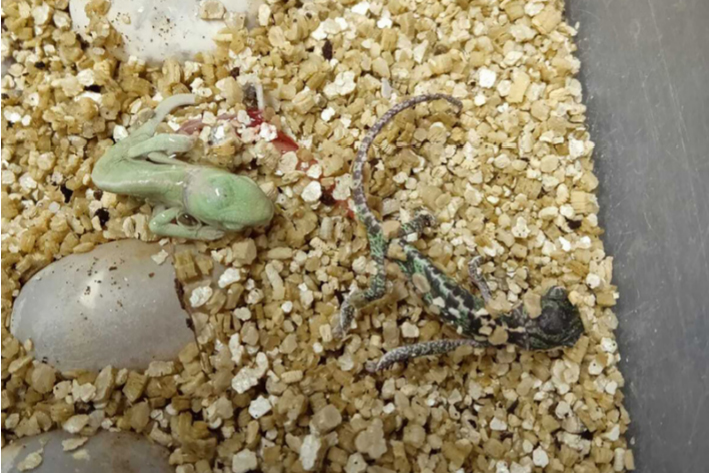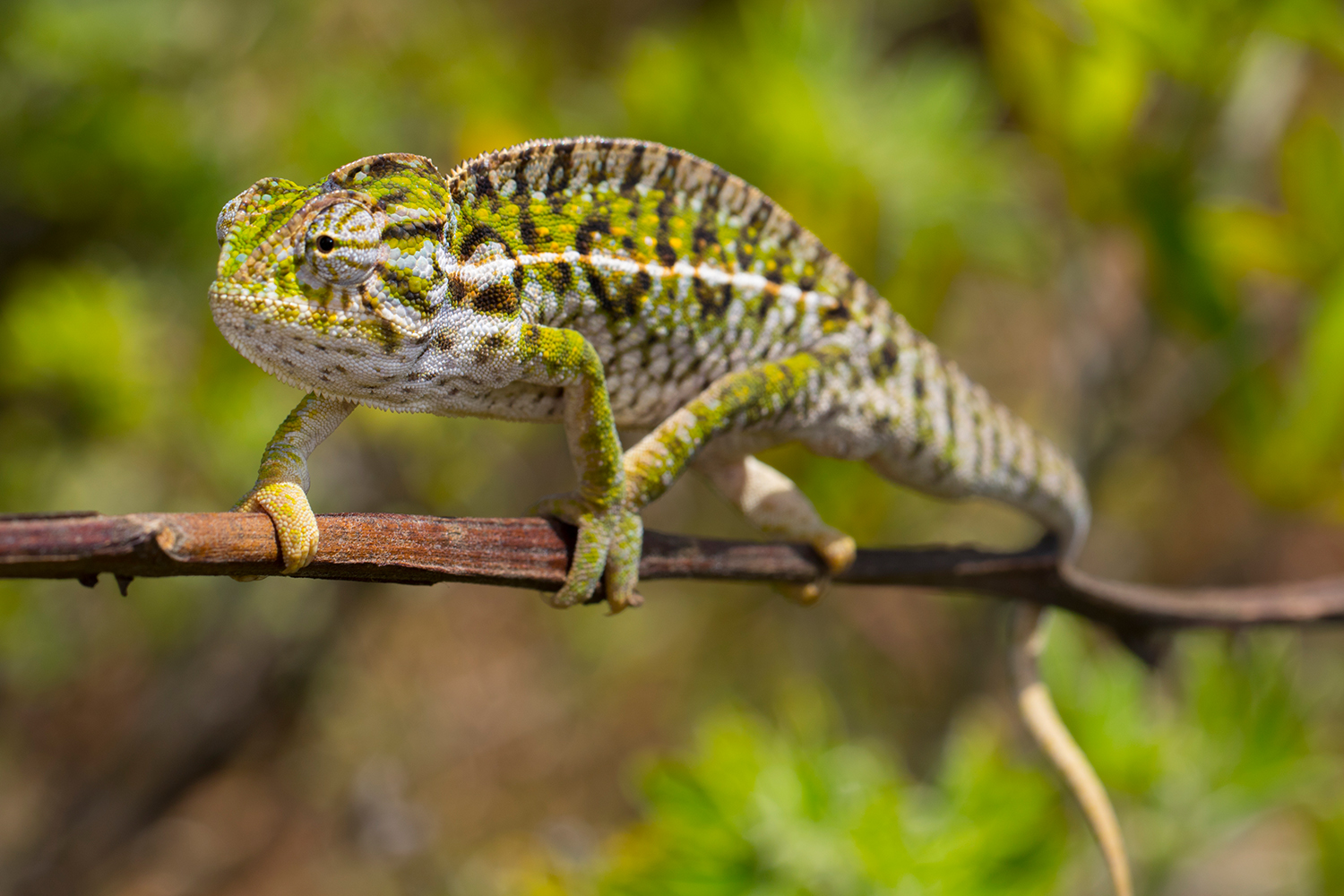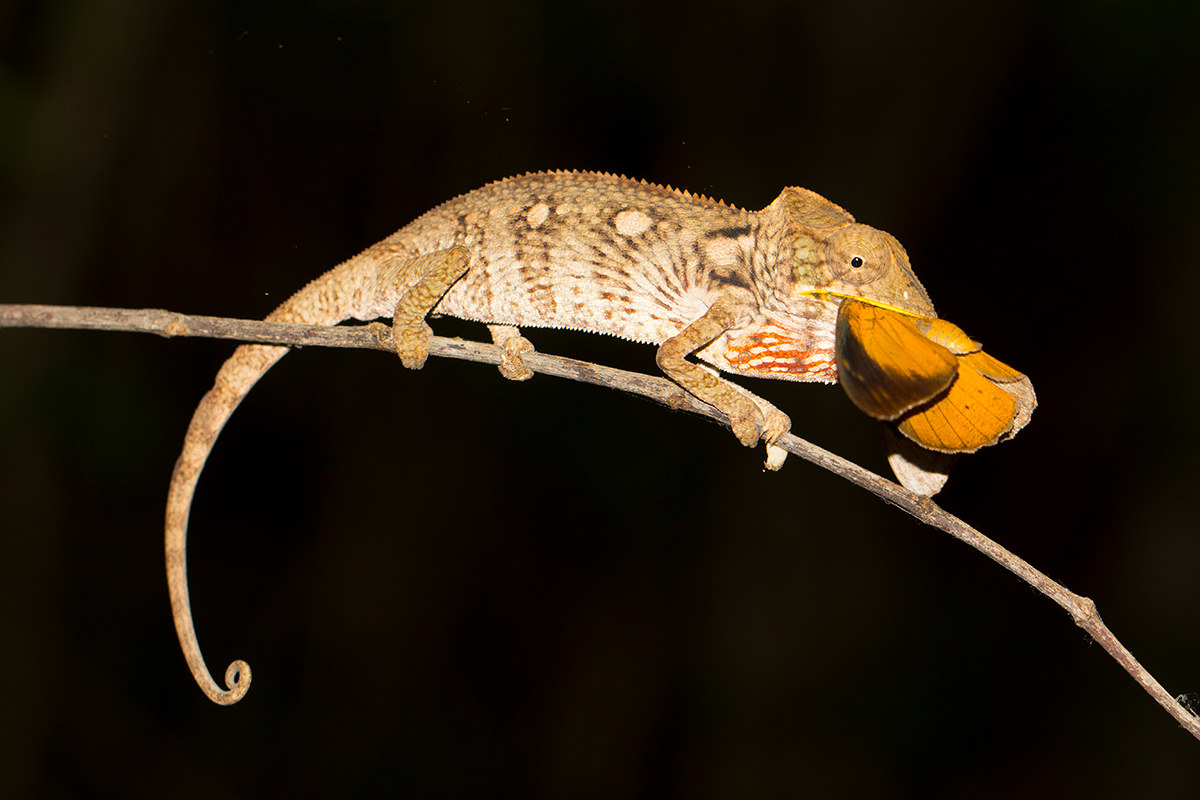The hatching of two pairs of twins of Veiled Chameleons (Chamaeleo calyptratus) in Latvia has been reported from Riga. The parents live at Riga Zoo and the young hatched in March 2022. The twins were two male and two female Veiled Chameleons, each pair in one egg. They came from a clutch of 85 eggs, of which 48 eventually hatched. All four young animals were active at first and accepted food. At the age of two months, one of the juveniles died, the remaining three were still alive in February 2023.
The article also gives a brief overview of cases of twins in reptiles from the existing literature.
A review of twinning in lizards and a report of Veiled Chameleon (Chamaeleo calyptratus) twin births
Alessandro di Marzio, Elza Birbele, Lucia Puchades, Andris Lazdiņš
Herpetology Notes 16: 471-476, 2023
DOI:
Photo: One of the twin pairs at hatching




